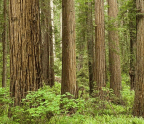FROM COLOR TO BLACK + WHITE



At its core, photography is the art of recording light. Not color. Just light. With light comes the absence of it, and the beautiful interplay between light and shadow creates the contrast in tonality that’s essential to black-and-white photography. By learning how to see the tonal variances within the scene in front of your lens, you can determine contours and shapes. It’s not the color blue, green or red that defines the ridge of a mountain. It’s the way light falls on its peak to one side while casting a shadow on the other. These details, contours and shapes form because of tones created from the ballet of light and shadow.
Before we dive into how black-and-white photography can help you create stronger images, it’s important to point out that there are many ways of approaching this process. Very early on in my days of digital photo editing, I thought that converting a
You’re reading a preview, subscribe to read more.
Start your free 30 days





